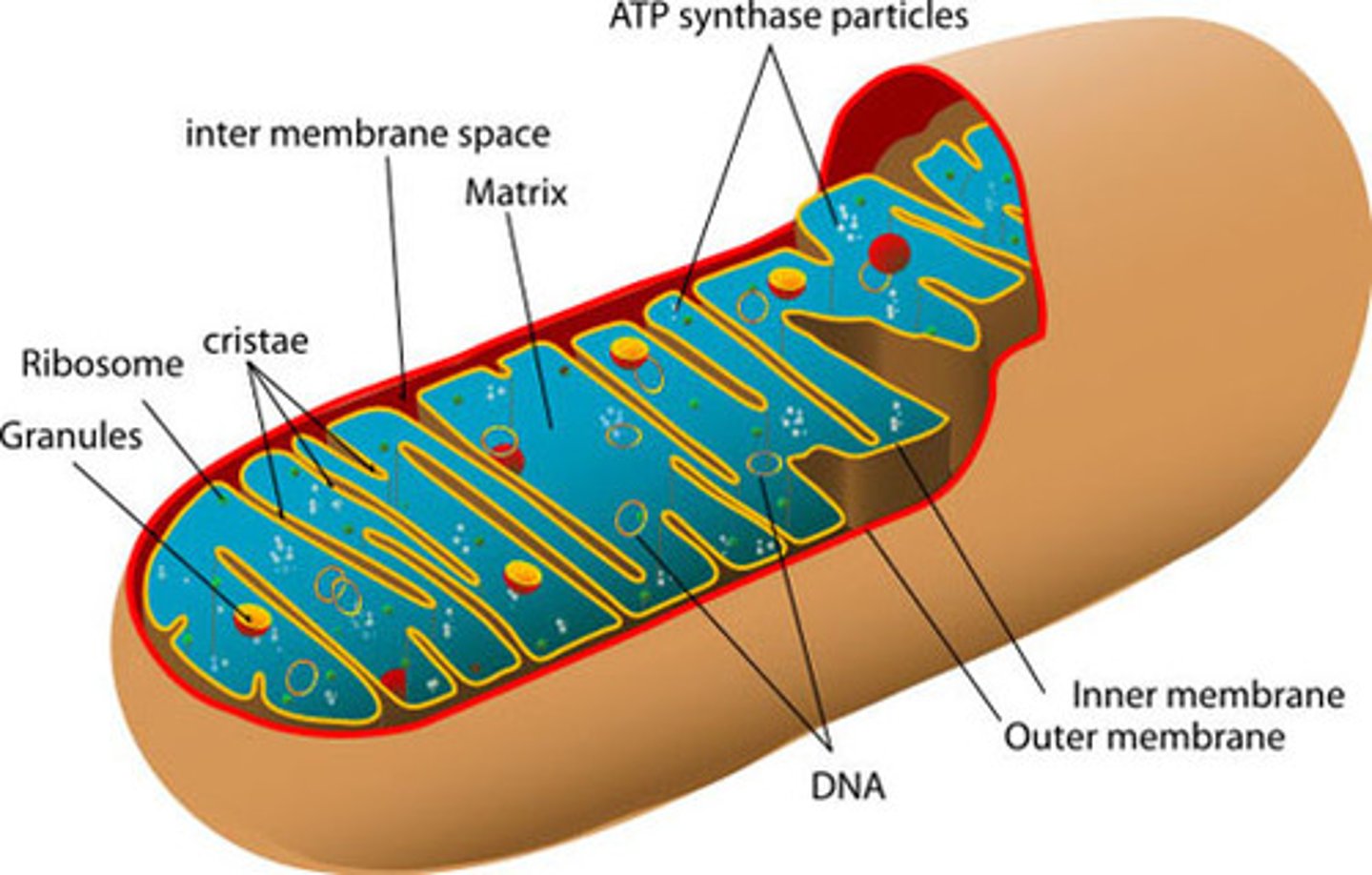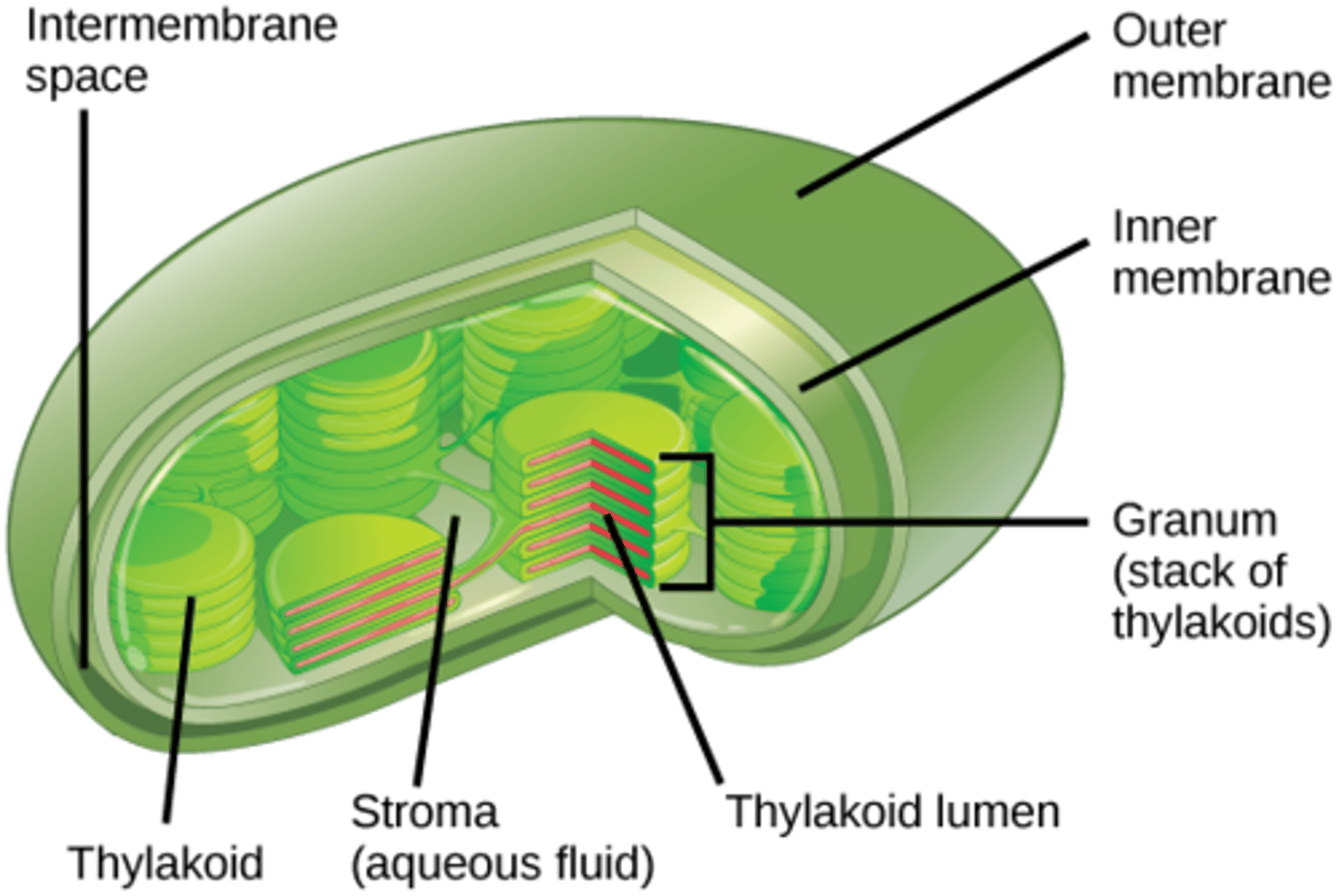IB Biology - B 2.2 Organelles and Compartmentalization
1/8
There's no tags or description
Looks like no tags are added yet.
Name | Mastery | Learn | Test | Matching | Spaced |
|---|
No study sessions yet.
9 Terms
B 2.2.1 Organelles as descrete subunits of cells that are adapted to perform specific functions
Structures in the cell that are considered organelles (sometimes some of these structures are argued to be considered organelles or not, because they do not fit all the characteristics of an organelle):
- nucleus
- vesicles
- ribosomes (not membrane bound)
- plasma membrane (the structure around the outside of the cell; not inside the cytoplasm)
- mitochondria
- golgi apparatus
- endoplasmic reticulum
Structures in the cell that are not considered organelles:
- cell wall
- cytoskeleton (a network of proteins that forms an internal framework for the cell; gives the cell structure; used to transport materials)
- cytoplasm (a location)
B 2.2.2 Advantage of separation of nucleus and cytoplasm into separate compartments
DNA (in the nucleus) gets transcripted into mRNA; one gene gets transcripted. The mRNA leaves the nucleus, goes out to a ribosome and gets translated into a polypeptide.
The mRNA that is transcripted in an eukaryote, is not completely read; parts of the mRNA gets removed and thrown away before it leaves the nucleus. Because of the nucleus, there is a chance of the mRNA to be altered before it leaves the nucleus, and arrives at the ribosome to be read.
In a prokaryote, because there is no nucleus, the mRNA can not be altered before it is read.
The nucleus provides the ability to modify the mRNA before a protein is made; reason why compartmentalization is important.
B 2.2.3 Advantages of compartmentalization in the cytoplasm of cells
1) Compartmentalization in the cytoplasm of cells allows the concentration of materials. When an compartment within the cytoplasm is made, we are able to:
- Concentrate materials that are going to be metabolized; metabolites.
- Concentrate the enzymes that we need (for reactions into one area).
Concentrate - gather things together in numbers or in a mass.
2) Compartmentalization in the cytoplasm of cells also allows the separation of biochemical processess.
- A lysosome (specific type of vacuole or vesicle) is a membrane-bound cell organelle that contains digestive enzymes; if the enzymes of the lysosome were just floating around in the cytoplasm of the cell, they would be digesting everything inside the cell, the cell would be eating itself; the cell shoves materials into the lysosome that need to be broken down.
When a cell swallows up a foreign cell/takes in a pathogenic organism, the cell kills the organism by throwing it into its lyosome or popping the lysomome, causing cell death.
B 2.2.4 Adaptations of the mitochondrian for production of ATP by aerobic cell respiration
The mitochondria is called the "powerhouse" of the cell because it produces ATP by aerobic cell respiration.
The mitochondrian has two (double) membranes: the outer membrane and the inner membrane. There is a space between the outer and inner membranes that is called the intermembrane space. The space inside of the inner membrane is called the matrix. The inner membrane is folded up, and each fold is called a cristae.
The small space (volume) between the membranes mean that things can be concentrated very quickly.
The folding of the inner membrane into cristae provide a larger surface area.
Two membranes allow compartmentilization of enzymes and substrates for Krebs Cycle in the matrix.

B 2.2.5 Adaptations of the chloroplast for photosynthesis
Not that much different from the adaptations of the mitochondrian for production of ATP by aerobic cell respiration.
The chloroplast has a two (double) membrane: the outer membrane and the inner membrane; and there is an intermembrane space between the two membranes. Inside the inner membrane are these structures called thylakoids that are full of chloroplast. The area inside of the inner membrane that is not within the chloroplast is called the stroma.
Instead of folding up the inner membrane, there is an extra level of compartmentilization where chlorophyll is inside of another membrane called the thylakoid; separated out the chlorophyll from the stroma and placed it inside the thylakoid.
Part of the reactions of photosynthesis, happen in photosystems (change of reactions); that occurs along the surface of the thylakoid.
There is a large amount of surface area due to the chlorophyll being stored inside the thylakoids; more thylakoids mean more membranes, more membranes mean more surface are for reactions. Lots of surface area gives very little volume inside of each thylakoid.
Two membranes allow compartmentilization of enzymes and substrates for Calvin Cycle in the stroma; separated away from the intermembrane space and the photosystems inside the thylakoid.

B 2.2.6 Functional Benefits of the Double Membrane of the nucleus
The membrane around the nucleus is a double membrane. But it is lined up slightly different than the double membrane found in the mitochondria or chloroplast. The double membrane of the nucleus is designed where the membrane is not one continuous double membrane; it actually folds so there are gaps/openings in it (which creates nuclear pores).
Nuclear pores are much larger than the pores in the plasma membrane caused by the folding of proteins creating openings inside the membrane. These openings created inside the plasma membrane are referred to as pores.
Ribosomes are manufactured inside the nucleus, and has to use nuclear pores to get out; like mRNA, tRNA, and rRNA.
The membrane must be able to be broken down into vesicles during mitosis and meiosis. When talking about both mitosis and meiosis, you talk about the nuclear membrane disappearing; the nuclear membrane breaks down. At the end of both mitosis and meiosis, new nuclear membrane forms. How it happens: each section of the membrane forms a vesicle (a small structure (bubble) within a cell, consisting of fluid enclosed by a lipid bilayer) then at the of mitosis and meiosis, when the new one is being formed, those vesicles fuse back together and create the nuclear membrane.
B 2.2.7 Structure and function of free ribosomes and the rough endoplasmic reticulum
Free ribosomes produce proteins used inside the cell itself.
Example: the enzymes for glycolysis are produced on free ribosomes.
Ribosomes attached to the endoplasmic reticulum (known as rough endoplasmic reticulum) produce proteins that are exported from the cell to be used elsewhere.
Example: the enzymes secreted (produce and discharge) into the duodenum of your intestines to break down/digest your food are produced on the rough endoplasmic reticulum.
B 2.2.8 Structure and function of the golgi apparatus
The golgi apparatus is a organelle that prepares, modifies, and sorts proteins (and sometimes, other materials) from the endoplasmic reticulum; for delivery to targeted destinations.
Hemoglobin (quaternary structure, conjugate protein; made up of four polypeptide chains that have iron molecules attached):
- the rough endoplasmic reticulum makes the polypeptide chains; there is a ribosome making alpha globin; another ribosome making beta globin. The alpha and beta globins get transported to the golgi apparatus, where the golgi apparatus takes two of the alpha and two of the beta globins and sticks them together along with iron, and then they get exported.
Both the endoplasmic reticulum and the golgi apparatus are made of lipids (membrane material); both endoplasmic reticulum and the golgi apparatus take materials, wrap them into a little piece of membrane, a vesicle; the vesicle gets moved, taken to the glogi apparatuse or plasma membrane where it will fuse; the material in the golgi will bud (split) off into a little vesicule that can the be carried off to combine somewhere else.
Since it packages materials, its structure is largely lipid.
B 2.2.9 Structure and function of vesicles in cells
Clathrins are proteins that coat intracellular vesicles transporting cargo between membrane-bound compartments in eukaryotes.
6 molecules of clathrin will bind to the plasma membrane; when they bind, then that part of the membrane will be pinched inward; when it is pitched in, it creates a circle; once that circle closes all the way around, the plasma membrane will seal back together which will create a small little bubble of membrane called a vesicle.
Endocytosis - when the plasma membrane pinches inwards, so a vesicle inside the cell is created.
Once the plasma membrane folds, a basket to support that vesicle is created.
Exocytosis - when a vesicle from inside the cell fuses with the plasma membrane and dumps the contents outside the cell.